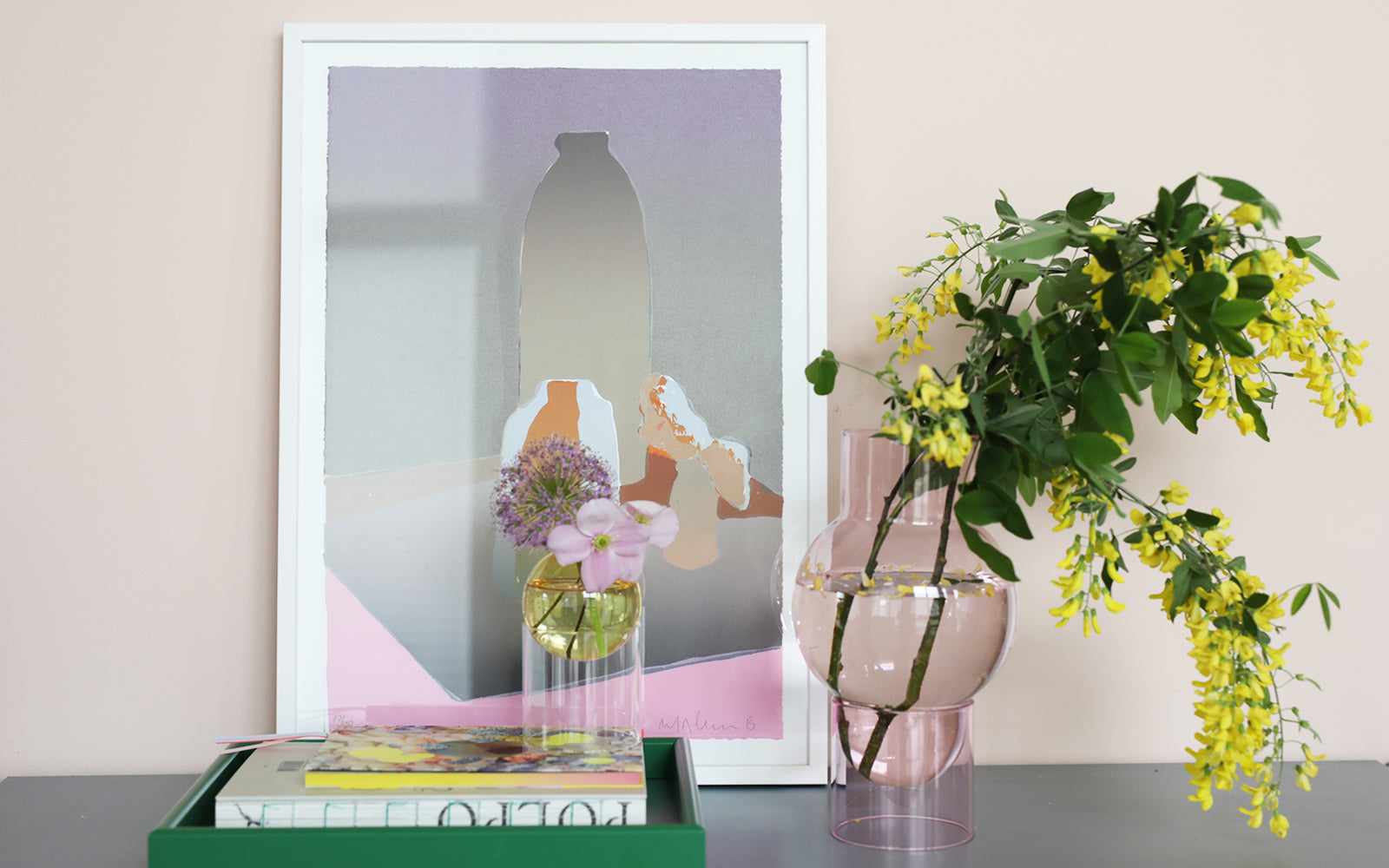
This is the time of year that most people long for, the gentle winds, the scent of summer and everything the green heart can desire.
At Studio About, we love our collaborations with the flower shops, their beautiful selection and not least their knowledge of the plants. However, we also have a great fondness for the wild, the immediate and individual which is found right outside the door.
In this article, we will show our green favorites from the month of June, and show how they can be styled with our vases.
OUR TOP 3 FROM THE GARDEN IN THE MONTH OF JUNE
- Lupins
- columbine
- Golden rain

SEE OUR BEAUTIFUL BUBBLE TUBES THAT ARE PERFECT FOR THE LARGE GARDEN BOUQUET.
Lupin, a childhood classic and an Instagram favorite
- Lupins are found in all the colors of the rainbow and also grow wild in the wild.
- It is a favorite in the perennial bed, where it will return year after year.
- Lupine is a type of pea flower and has many small, plump, fragrant flowers that gather into a cone.
- Beautiful in a vase, although the lifespan inside is short.
- If you have them on the balcony or in the garden, as soon as it has finished blooming, you can cut off the flower itself and watch it bloom again in late summer.
- They are self-sowing, so once you have planted them in the garden they are a permanent lodger.

Acacia, a delicate and elegant guest in the garden
Another wild favorite with some of the same properties as the lupine is Akeleje.
An elegant, lovable perennial that, with its small round leaves, delicate stems and bell-shaped flowers, calls out gently in the garden.
- Columbine blooms from April to July and can also be found in a multitude of colours.
- The plant can change color, so even if you plant one in white, you cannot know for sure what color will come the following year.
- Columbine is also found in ditch edges and along hedges.
- They are self-sowing and easy to care for.
- Stands beautifully in vases, alone or with others.

Here it is an elegant Standing Bubble in the color amber , styled with light blue horn violets, pink columbine and a yellow wild poppy.
Applicable to both lupines and columbines is that they are bee-friendly and attract a lot of insects that are beneficial to the garden and nature in general. When we plant our gardens it is important that we think about biodiversity and native plants that can contribute positively to a rich wildlife.
READ THE ARTICLE ABOUT THE WILD GARDEN HERE
 GOLDEN RAIN IN OUR ROSE BUBBLE TUBE
GOLDEN RAIN IN OUR ROSE BUBBLE TUBE
Golden rain
Gold rain is a large deciduous shrub or smaller tree. Golden rain, Laburnum, already blooms from mid-May and most of June. Golden rain is often seen in ditch edges. It is not as popular in the garden as the well-known wisteria, but it is definitely worth picking.
Golden rain in vases:
- Give the stem a sharp oblique cut.
- Make a new cut approximately every other day so that the flower can draw up water better.
- Put them in hot water.
- Put a little bit of sugar in the water in the vase.

In the picture, we have styled a little standing Bubble with a little gold rain found on the walk.
We love that you use plants that don't immediately belong in a bouquet. Think creatively and use some alternative plants in your vases.
IDEAS FOR ALTERNATIVE DECORATIONS
- Let your chives bloom and enjoy the beautiful seed pods for a long time. You can leave them on the plant for the benefit of the wildlife, but they are definitely worth taking inside in a vase too.
- Also pick some individual clematis flowers and use them in small vases, it is elegant and decorative.
- Pansies and horn violets can be bought everywhere in May and last well into June, pick a stalk and bring them inside.

INVITE YOUR GUESTS TO HOMEMADE THEA
Mint is available in over 100 varieties and is easy to grow. In fact, they take root so easily that you have to be after them so that they don't spread to the whole garden. Mint is also perfect in a pot and tolerates drying out. Pick some mint with a stem on it and put them in a vase, the mint will take root very quickly and you now have an extra small plant.
The mint is an ancient plant and is known as both a medicinal plant and a spice plant. Therefore, do not hesitate to make a cup of refreshing tea for yourself or your guests.
RECIPE FOR MINT THE
- Cut or pick a good handful of mint, preferably with a stem
- Put it in a cup or teapot
- Pour boiling water over
- Stir
- Add a bit of lemon or lime if necessary
- Serve and enjoy the taste of your garden
FIND YOUR FAVORITE AMONG OUR SMALL STANDING BUBBLES HERE

